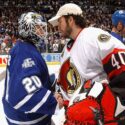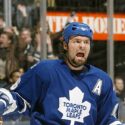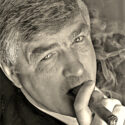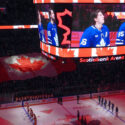TORONTO (Dec. 30) — It was 25 years ago tonight, at the Kiel Center in St. Louis, that Mats Sundin scored the fastest overtime goal in National Hockey League history. I covered the game as Leafs reporter for The FAN–590. I remember returning to my press box location. As soon as my derrière touched the seat, the game was over. Referee Bill McCreary dropped the puck at center ice. Doug Gilmour beat former teammate Peter Zezel and quickly fed Sundin on the right side. Sundin’s hard shot fooled Grant Fuhr at 0:06 of the extra frame. The six–second record has since been equaled three times in the regular season, most recently (on Jan. 24, 2018) by Toronto winger William Nylander, at Chicago. The fastest playoff overtime goal was scored by Brian Skrudland of Montreal, at the Saddledome in Calgary, on May 18, 1986. I was also on hand for that moment, which ended Game 2 of the Stanley Cup final… nine seconds into the extra period.
On the night of Dec. 30, 1995, no player had won a match in OT (season or playoffs) as quickly as Sundin.

Which brings me around to the best moment of my career at The FAN–590. Just more than an hour before the 1994 NHL draft at the Hartford Civic Center, I was loitering at the fence that separated the media from tables of the 26 teams. Rumors of a big Leafs trade had been circulating for more than a week. My former radio colleague, Bill Watters, was having a conversation with his ex–partner in the player–agency business, Rick Curran. Bill was assistant general manager of the Leafs. He didn’t know how to whisper. As such, I overheard him tell Curran: “This is gonna be big; it’ll blow your socks off.” With that clandestine clue, I raced to the phone and called the radio station. Dan Shulman and the late Jim (Shaky) Hunt were in the midst of Prime Time Sports. I went on the air live and told of my information, without betraying Watters. “As you know, rumors of a big Maple Leafs move have made the rounds this week,” I said. “And, I’ve just discovered that the deal is going to be a blockbuster. I suspect we’ll hear about it long before this night is over.”
At that moment, purely by accident and coincidence, an agent named Eugene McBurney, who I had known for several years, happened by and stuck a piece of paper under my nose. It detailed a monster trade between Toronto and Quebec that featured Wendel Clark going to the Nordiques for Swedish center Mats Sundin. I looked at McBurney. He pointed vehemently at the paper; then grabbed it from me and wrote, in large capital letters, “THIS DEAL HAS BEEN MADE!!!” I told Shulman and Hunt that I needed to pause for a moment. I put my hand over the telephone receiver and said, “Gene, this is my career.” He replied, “go with it. Now!” At which point I returned to the conversation and said, “guys, our timing seems to be impeccable. I have been told by a very good source that the Leafs and Quebec are going to announce a giant, six–player trade. Incredibly, Wendel Clark is involved. He is going to the Nordiques in a deal for Mats Sundin.” I then read off the names and draft picks McBurney had written down… all the while dying a thousand deaths.
I was announcing this on radio in the teeth of the afternoon–drive, when multitudes were in their cars returning from work. If it didn’t come off, I would have applied for unemployment insurance the next day.
Shulman and Hunt were obviously taken by the news and questioned its legitimacy. At no point in the week–long spate of rumors had Clark or Sundin been mentioned. “All I can tell you, guys, is I’ve gotten this from someone I really trust.” Again, my career flashed before my eyes. Within 30 minutes, however, NHL commissioner Gary Bettman stepped to the podium in the Civic Center and said, “I’ve got a trade to announce.” With that, Bettman rattled off each player and draft choice in the Toronto–Quebec swap. Exactly as Gene McBurney had written on the sheet of paper. Needless to say, I felt as if I had dodged an execution.
It would be the most–triumphant moment of my 17 seasons covering the Leafs on radio.
Though I jumped the gun more than a few times in my FAN–590 career, I had the extreme luck to break four rather significant stories. A year–and–a–half before the Sundin trade, I was in West Palm Beach, Fla. covering the December 1992 NHL Board of Governors meeting at The Breakers resort. I was shuffling between the hall outside the meeting room and the room assigned to reporters. At one point — again, entirely by accident — John Ferguson, general manager of the Winnipeg Jets, came out for a bathroom break. I knew Fergie from my years, in the mid–80’s, putting together the Jets’ game programs.
“Hey, John, anything happening in there?” I asked with a smile.
“Oh, nothing, Howie… except Florida and Anaheim joining the league next season.”
I paused with my mouth open. “John, this is no time to fu** with me. I’ve got to go on the air.”
“Do what you want, Howie. I’ve just given you the scoop. We voted on it a few minutes ago.”
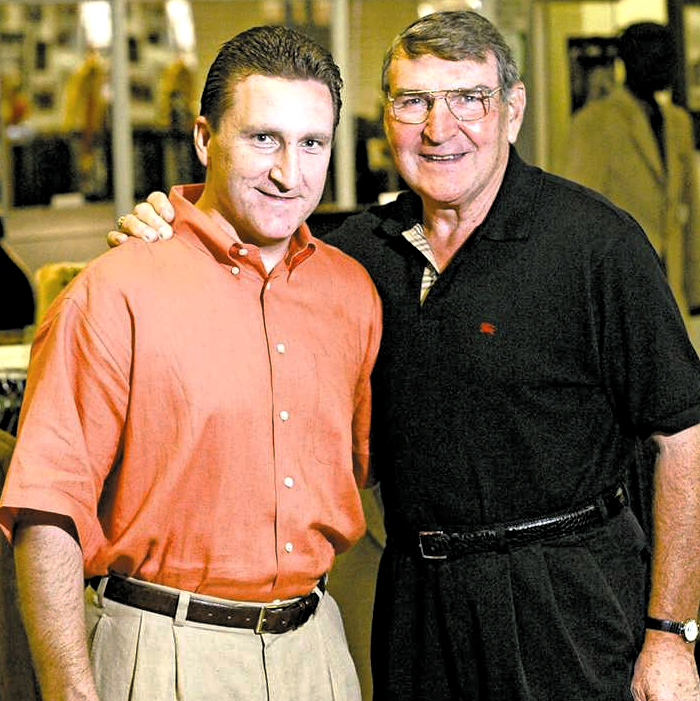
JOHN FERGUSON (RIGHT) POSING WITH HIS SON, FORMER LEAFS GM JOHN FERGUSON JR.
Until that moment, there had been no expectation at all that the NHL would expand for 1993–94. The big news everyone anticipated was that Bettman would be approved as the league’s first commissioner. Which happened. Rather than tail Ferguson into the men’s room, I trusted his “scoop” and walked out to the beach for better reception. Standing on the shore of the Atlantic Ocean, waves rolling in the background, I telephoned the radio station. This was just after noon and Shulman was hosting. “Dan, out of nowhere, I’ve just been told by a general manager that the NHL is adding two teams for next season — in Anaheim and Miami.” I’ll never forget Shulman’s reply. He laughed and said, “Howie, what are you smoking down there?”
I couldn’t blame him.
Again, this was the first mention, anywhere, about the ’93–94 expansion. The Canadian Press quickly issued an alert: “A Toronto radio station, The FAN–590, is reporting that Miami, Florida and Anaheim, California will be added to the NHL for next season. More details to follow…” In a press conference after the meeting, Bettman was formally introduced for the first time. Flanking the new commish were Wayne Huizenga of Blockbuster Video (owner of the Miami franchise) and Michael Eisner, chairman and CEO of the Walt Disney Company, which owned the new Anaheim club. Once more, I exhaled deeply. With overwhelming relief.
Somewhere, I have the original Canadian Press bulletin. My boss at the radio station, Scott Metcalfe, had torn it off the old–style newsprint roll on which breaking stories would appear after the sounding of three bells. At the bottom, Scott wrote: “Great work, Howard!” Perhaps it was. But, there wouldn’t have been a story if John Ferguson’s bladder weren’t full. Again, simply good fortune. More stories in my next blog.
50 YEARS AGO TONIGHT
at Maple Leaf Gardens
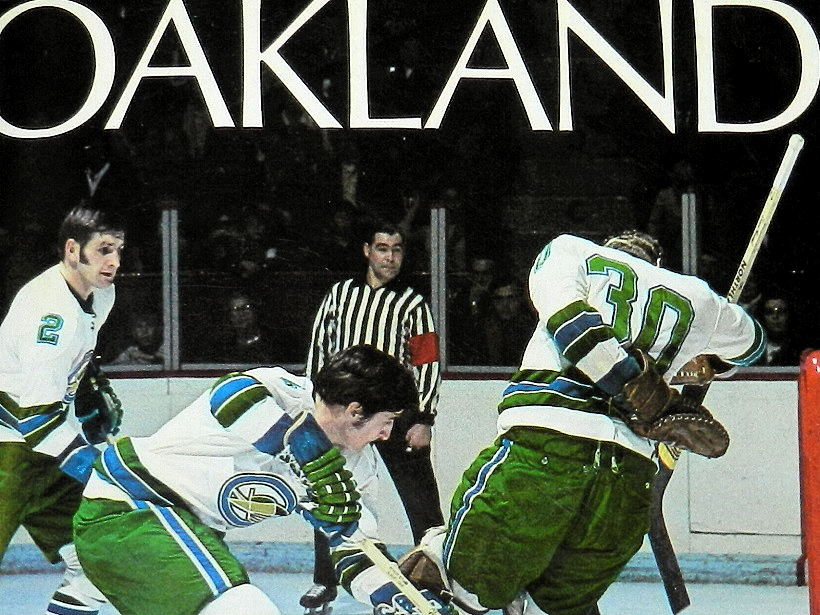
After an horrific, 7–18–1 start to the 1970–71 season, the Maple Leafs dramatically came alive with a 13–1–2 power move between Dec. 9 and Jan. 10, rocketing into playoff territory in the East Division. As part of that streak, the Leafs upended the California Golden Seals, 3–1, in a home date, 50 years ago tonight, to end the 1970 calendar year. The front cover of the Seals album from the 1970–71 Maple Leaf Gardens set is above.
The visitors came to town with their green road uniform; the Maple Leafs wore their home white and blue outfit — both depicted, below, from the website nhluniforms.com. California’s new color scheme matched that of the baseball Oakland A’s after A’s owner Charles O. Finley purchased the hockey club.
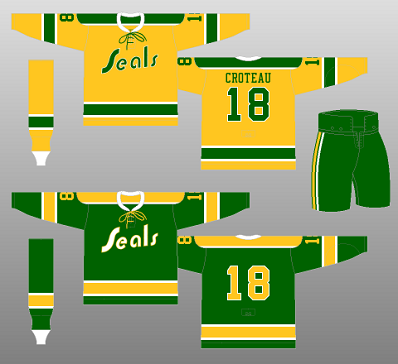
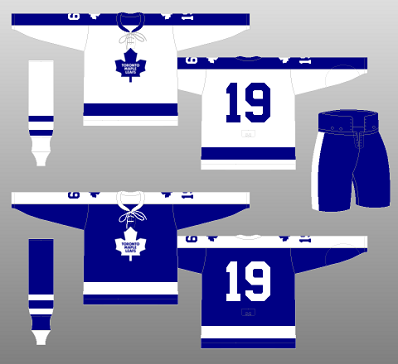
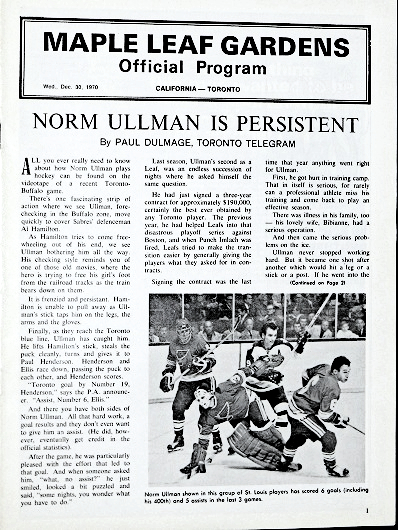
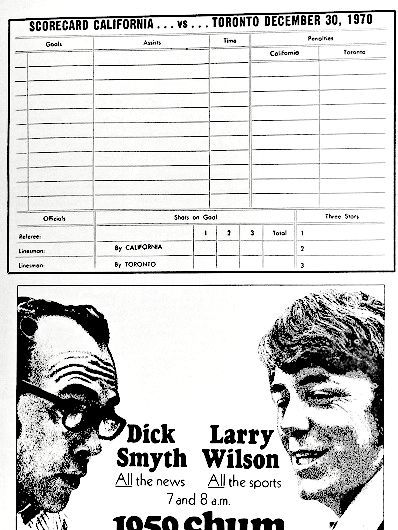
First–period goals by Dave Keon (at 33 seconds) and Garry Monahan (16:06, on the powerplay, assisted by Keon) was all the Leafs would need on this night to upend California. Gerry Ehman beat Jacques Plante at 13:28 of the second period, but Paul Henderson fooled Gary Smith and restored Toronto’s two–goal lead at 2:05 of the third. The Leafs, improving to 9–1–0 in their previous 10 games, outshot the Seals, 38–31.
Dave Newell was the referee; John D’Amico and George Ashley, the linesmen.
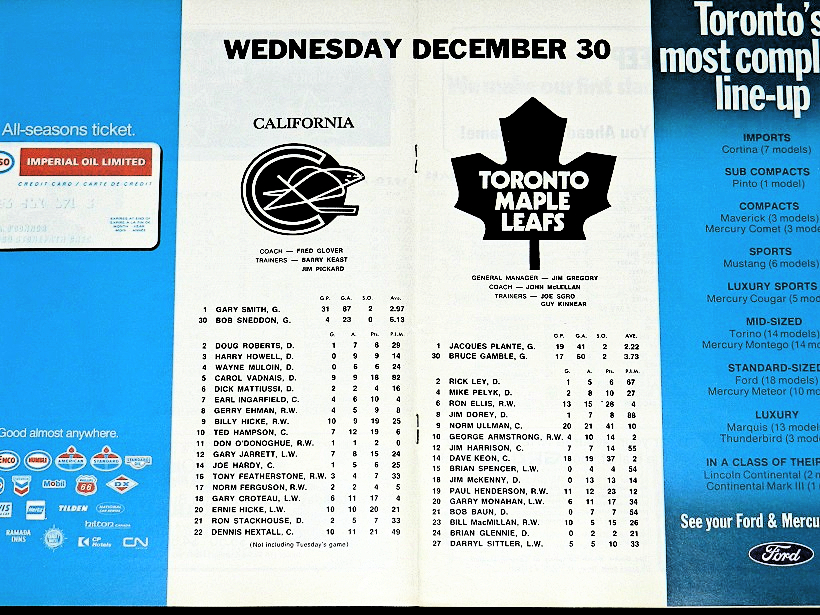
California’s line–up (above and below) was nearly identical to that of the previous year; the 1969–70 Oakland Seals made the playoffs for the second consecutive spring but were swept in the opening round by the Pittsburgh Penguins. Future Hall–of–Fame defenseman Harry Howell (3) was in his second year with the Seals after 16 seasons with the New York Rangers. Carol Vadnais (5) was the most–gifted California blue–liner, coming off a 24–goal season, though rookie Ron Stackhouse (21) would enjoy some big years later with Pittsburgh, including seasons of 71 and 60 points. Brothers Bill and Ernie Hicke were playing well for the Seals in the first half of ’70–71, having combined for 39 points. Former Leaf Gary Smith was the club’s clear No. 1 goalie. He would appear in 71 of California’s 78 games. Gerry Ehman (8) was also a former Leaf.
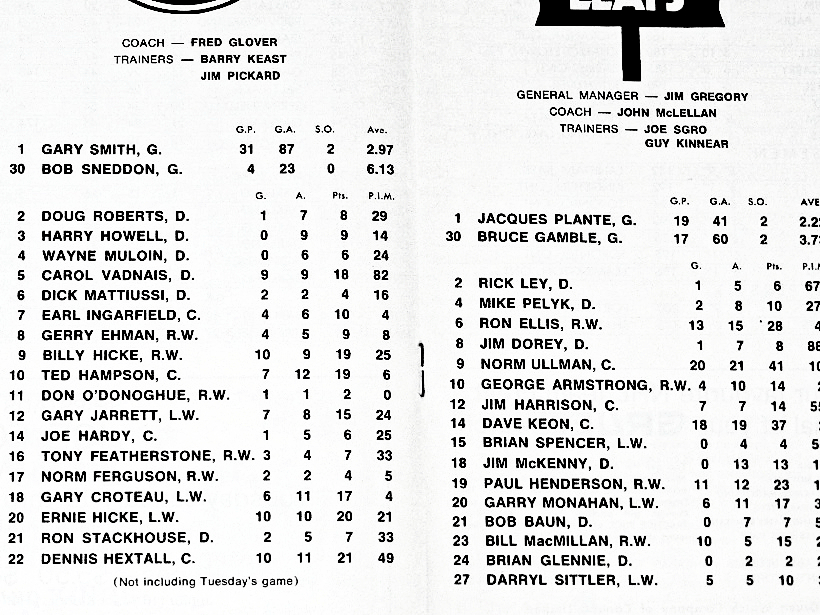
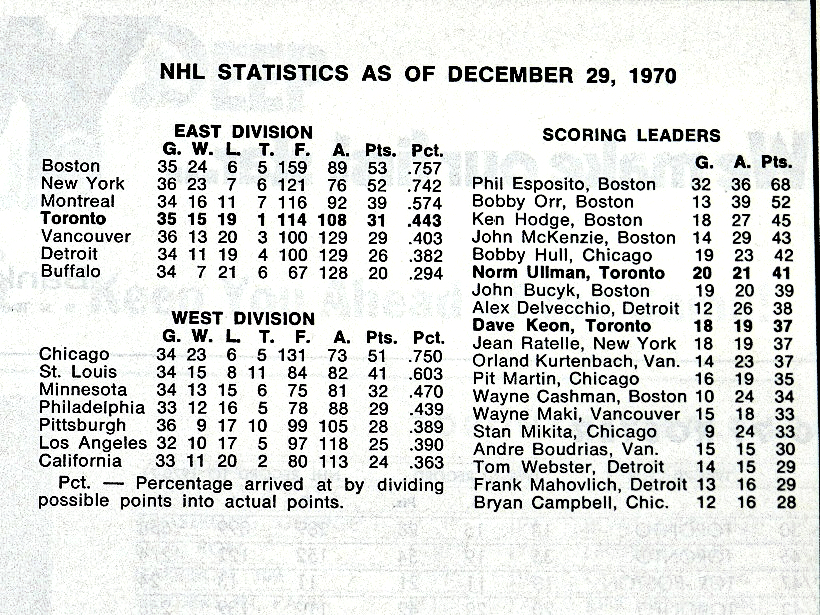
Phil Esposito and Bobby Orr of the league–leading Boston Bruins were starting to run away atop the NHL points list. Norm Ullman and Dave Keon of the Leafs were amid the top nine scorers as 1970 became 1971.
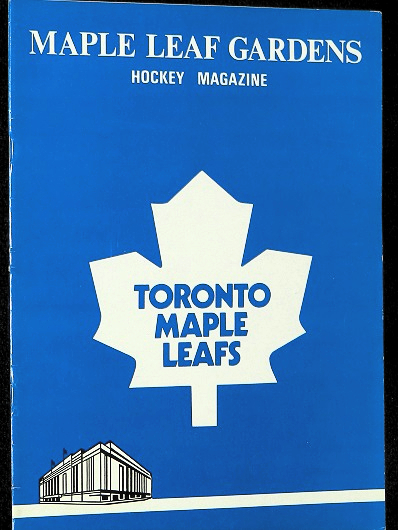
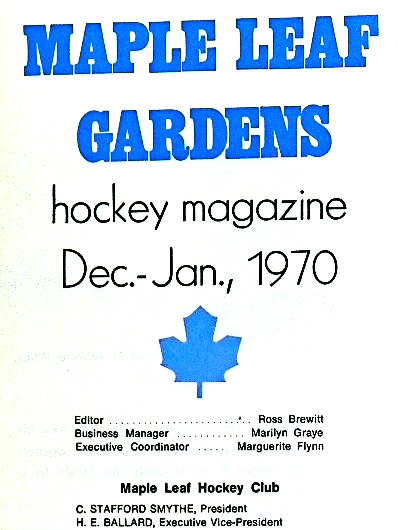
Also part of the Toronto–California program from Dec. 30, 1970 was the third edition (Dec.–Jan.) of the Maple Leaf Gardens Hockey Magazine… cover and masthead, above.
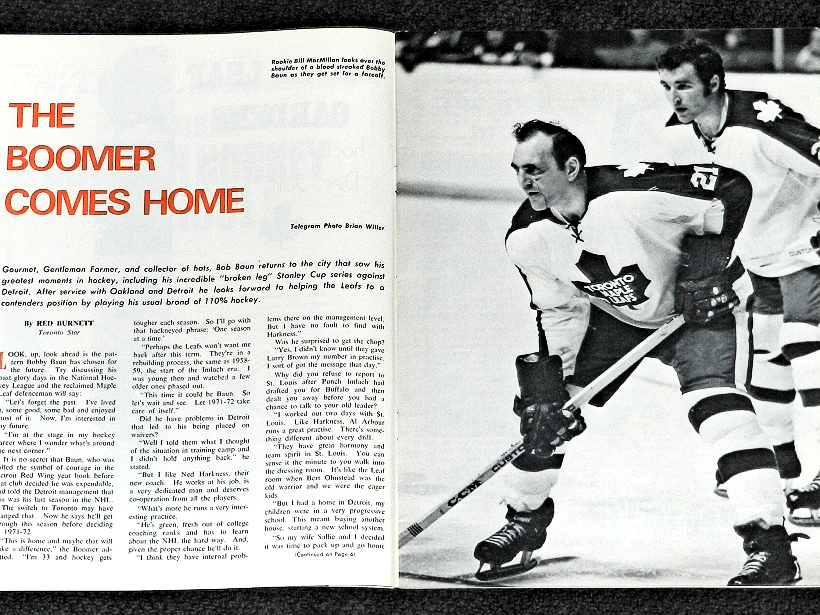
The theme of the magazine was veteran players returning to their teams: Defenseman Bob Baun (above) coming back to the Leafs after three seasons (one with Oakland; two with Detroit). Veteran John Ferguson (bottom–left) ending a brief retirement with Montreal and George Armstrong re–joining the Leafs after emerging from retirement for the third time in four years. This would be Armstrong’s final NHL season.
Neither would the headline (bottom–right) pass the editor’s desk in today’s racially sensitive society.
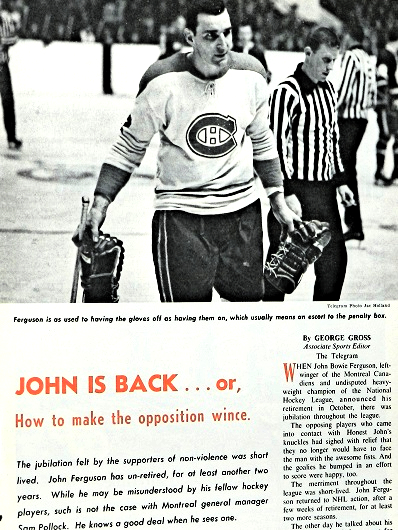
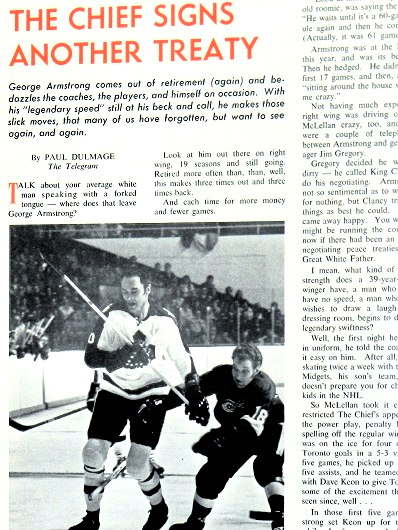
EMAIL: HOWARDLBERGER@GMAIL.COM

